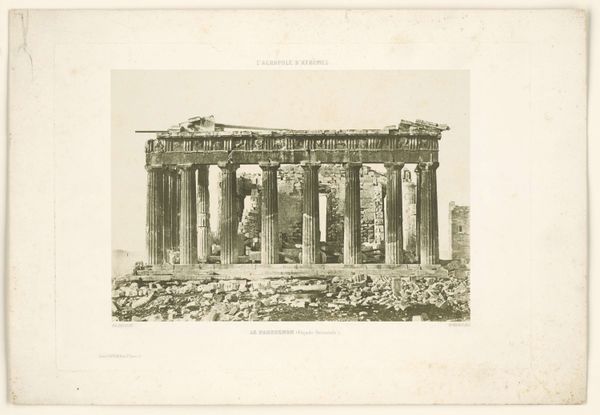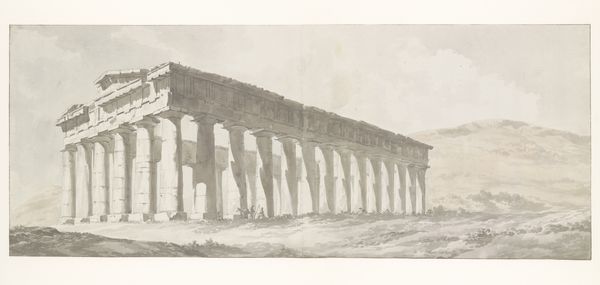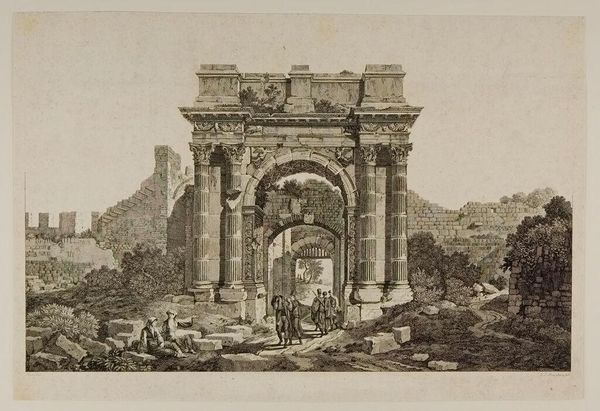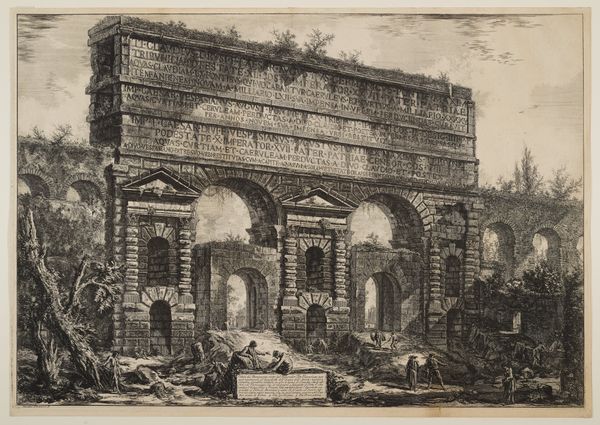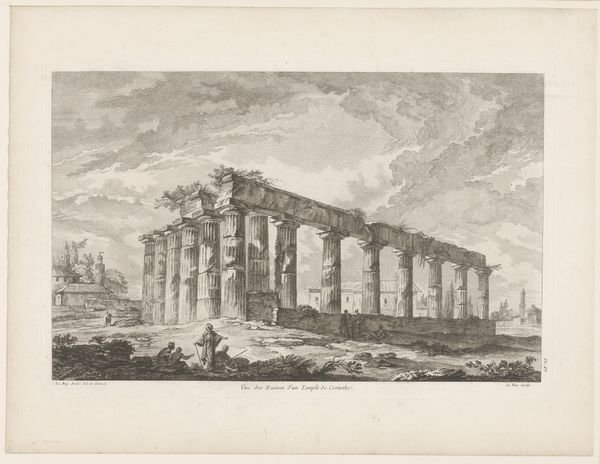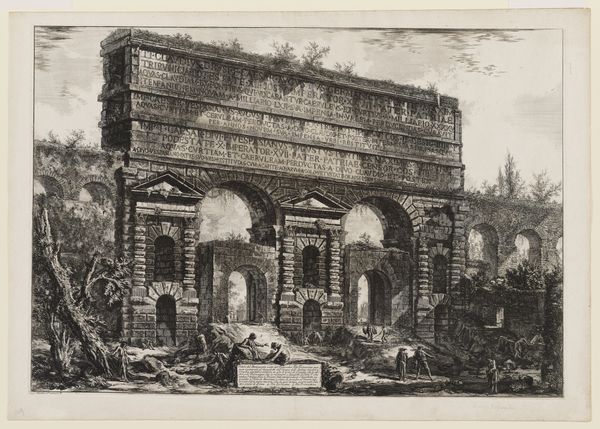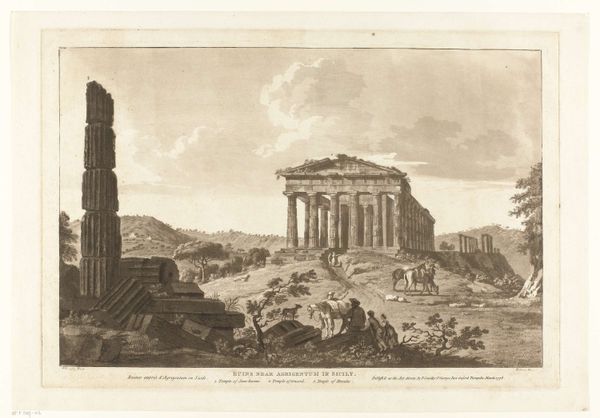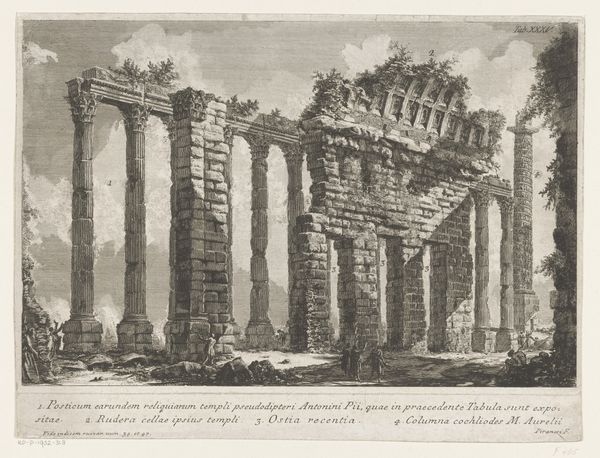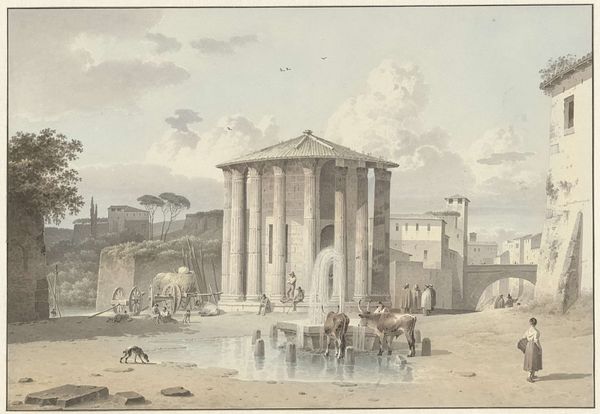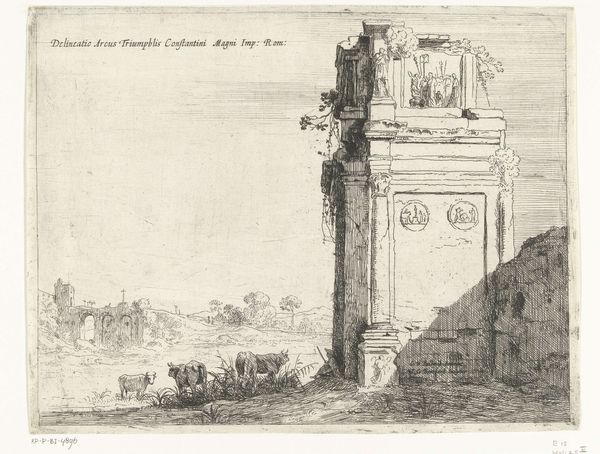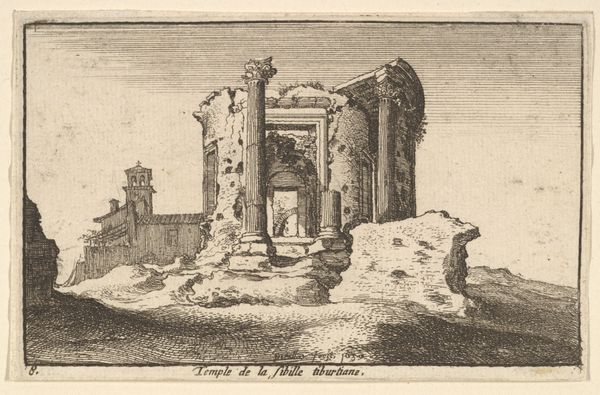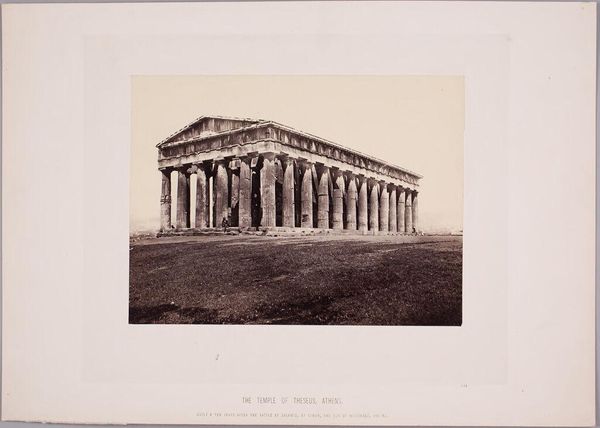
print, engraving, architecture
# print
#
old engraving style
#
landscape
#
ancient-egyptian-art
#
historical photography
#
19th century
#
line
#
history-painting
#
academic-art
#
engraving
#
architecture
Dimensions: height 250 mm, width 350 mm
Copyright: Rijks Museum: Open Domain
Curator: Let’s turn our attention to "Ruïne van de tempel van Esna," an engraving dating back to 1830 by Leendert de Koningh, currently residing here at the Rijksmuseum. What are your initial thoughts on this piece? Editor: It's evocative, wouldn't you say? This faded grandeur, those solemn figures gathered at the ruin’s edge… feels almost like a staged tableau, a meditation on time and empire. Bit of the melancholic sublime. Curator: Absolutely. It's essential to consider the historical context. This piece was created during a period of intense European interest in Egypt, fueled by Napoleon’s campaigns and a growing field of Egyptology. How does de Koningh's work engage with this colonial gaze, depicting not just the ruin but also, intentionally or unintentionally, power dynamics? Editor: It's a fascinating point. You can't help but wonder about those figures – are they merely observing, or do they have a deeper connection to what remains? Do they represent the inheritors or the displaced? Maybe it’s about trying to comprehend the incomprehensible… to feel infinitesimally small in the face of such monumental history. Curator: Precisely. The “line” style itself contributes to a sense of clarity and “objectivity”, though, of course, no representation is truly objective. How does this style reinforce or challenge prevailing ideas about Egypt and its ancient history within academic art circles? The engraving, with its meticulous details, evokes the documentary approach often associated with that era. It reinforces a Western perspective through a visual survey that organizes and interprets Egyptian history for a European audience. Editor: Hmm… Well, despite the supposed clarity, there’s a wistful atmosphere too. Perhaps it’s in that vast sky, or in the deep shadows playing around the temple's architecture. Maybe it’s in the way those tiny figures invite contemplation. Is it just my imagination, or is this engraving somehow asking us to imagine an alternate reality beyond its seemingly accurate lines? Curator: That interpretation is spot on, because art, including pieces like this one, prompt crucial dialogues about representation, power, and our relationship with history. Editor: Exactly! It's about ruins, sure, but also about our enduring curiosity, our reach for something greater, even when—maybe especially when—it’s lost.
Comments
No comments
Be the first to comment and join the conversation on the ultimate creative platform.
